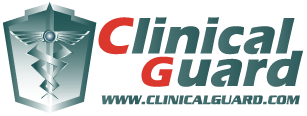What is a pulse oximeter?
Before the advent of the pulse oximeter, assessing arterial oxyhemoglobin saturation required the use of expensive blood-gas analyzers and invasive sampling of arterial blood [1,5]. Although blood-gas analyzers still can be used nowadays, the standard method of measuring oxygen saturation has been greatly changed and improved by pulse oximeter.
Generally speaking, a pulse oximeter such as OctiveTech 300D is a medical device that is used for non-invasively measuring oxygen saturation in a patient's blood, as one of the indices of the patient's medical condition, either continuously or intermittently. The invention of the pulse oximeter made the oxygen saturation measurement much more efficient and convenient.
How does a pulse oximeter work?
A typical pulse oximeter shines a pair of small light-emitting diodes(LED) facing a photodiode through a translucent part of the patient's body, usually a fingertip or an earlobe. One LED is red, with wavelength of 660 nm, and the other is infrared, 905, 910, or 940 nm. Absorption at these wavelengths is significantly different between oxyhemoglobin and deoxyhemoglobin, therefore the oxyhemoglobin/deoxyhemoglobin ratio can be calculated from the ratio of the absorption of the red and infrared lights. [2]
The monitored signal bounces in time with the heart beat because the arterial blood vessels expand and contract with each heartbeat. By assessing only the varying part of the absorption spectrum (basically, subtracting minimum absorption from peak absorption), a monitor ignores factors caused by other tissues, such as venous blood, skin, bone, muscle, fat, etc. and even (in most cases) fingernail polish and discerns only the absorption caused by arterial blood. Thus, detecting a pulse is necessary to the operation of a pulse oximeter or the oximeter will not function. [2, 3, 4]
Due to the simplicity and the speed of measurement (they clip onto a finger and display results within a few seconds), a pulse oximeter is very important in the settings where the patient's oxygenation is unstable, including emergency, intensive care and recovery settings. They are also very useful for patients with respiratory or cardiac problems and pilots operating in a non-pressurized aircraft above 10,000 feet (12,500 feet in the US), where supplemental oxygen is required. Pulse oximeters are also used in sports industry to provide references for athletes' training and healthcare. Prior to the oximeter's invention, many complicated blood tests were needed to be performed. [2,3,4]
What is normal level of oxygen saturation?
Normally, oxygen saturation level should be between 97% and 99% in a healthy person. An oxygen level over 95% is clinically acceptable. Using the oxyhemoglobin dissociation curve, an oxygen saturation value of 90% is generally equivalent to a PaO2 (arterial partial pressure of oxygen) of 58 mm Hg. [6]
What models can I purchase from www.clinicalguard.com?
ClinicalGuard.com provides various models of fingertip pulse oximeters and hand held pulse oximeters in affordable prices for your selection to satisfy your requirements either in medical condition monitoring or for your personal healthcare. The portable size allows you to monitor your spO2 (percent hemoglobin saturated with oxygen) wherever you want, either in a clinic or at home, whenever you want, either daily use or after sports.
Please check out our website ClinicalGuard.com for detail pulse oximeter specifications for each model.
References:
[1] Grosenbaugh, G.A. and Miur, W.W., 1998, Pulse Oximetry: A practical, efficient monitoring method, Veterinary Medicine, 60-66
[2] Wikipedia, viewed Mar. 2007
[3] Wikipedia, viewed Mar. 2007
[4] Oxford University, Nuffield department of anaesthetics, viewed Mar. 2007
[5] Wikipedia, viewed Mar. 2007
[6] American Association of Criticalcare Nurses, viewed Mar. 2007
Disclaimer:
The information on this website aims to provide customers with relevant knowledge regarding our products. Under no circumstances should the information be used for therapeutic purposes. Customers must consult their doctors for the correct use of these information and products. ClinicalGuard.com is not responsible for any losses or accidents caused by the use of information on this website.

